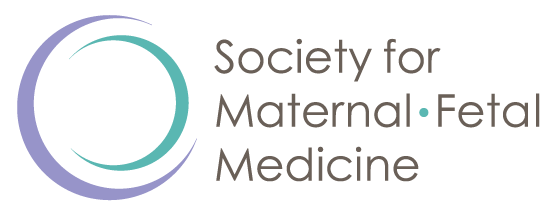
Periviable Premature Rupture of Membranes (PROM)
Premature rupture of membranes (PROM) occurs when there is a rupture in the sac that contains the fetus and the amniotic fluid, prior to the onset of labor. This event is commonly referred to as “the waters breaking.” “Viable” refers to the age at which it is possible for the baby to survive outside the mother’s body.
The Society for Maternal-Fetal Medicine (SMFM) defines periviable PROM as rupture of membranes that occurs between 20 0/7 and 25 6/7 weeks of gestation. Fewer than 1% of pregnancies are affected by this complication, but the consequences for both the mother and the baby can be serious.
How long can a woman stay pregnant after PROM occurs?
The amount of time a woman stays pregnant after PROM is called the “latency period.” This period varies significantly from person to person. Usually, the earlier in the pregnancy that PROM occurs, the longer the latency period. When periviable PROM occurs, the average latency period ranges from 6 to 39 days.
Many women wonder if the rupture can heal on its own. Resealing of the sac may occur in as many as 8% of pregnancies. This is less common if the sac ruptures on its own, and more common if PROM occurs as a result of a procedure such as amniocentesis. Currently, there is very little information available about pregnancy outcomes in women with PROM when the sac reseals.
What are the risks to mother and baby when periviable PROM occurs?
The most common complication of periviable PROM is infection affecting both a woman and the fetus. There is a high rate of significant illness or death of the baby in pregnancies complicated by periviable PROM. Although approximately 50% of babies will be born alive after periviable PROM, the survival of the baby to discharge from the hospital is only 26%. The baby may die in utero (“stillbirth”) due to compression of the umbilical cord from the low level of amniotic fluid, or if the cord passes out of the cervix into the vagina and is compressed (“cord prolapse”). After the baby is born, the most common complications are usually due to extreme prematurity, and not necessarily to PROM itself. These include breathing problems, severe infection (sepsis), and bleeding in the brain.
Other complications are due to the lack of fluid around the fetus, including undeveloped or underdeveloped lungs, and compression of the limbs and face, which can result in contractures or flattened facial features. If the lungs are unable to fully develop due to the lack of fluid (also called pulmonary hypoplasia), the baby is at higher risk of death after delivery. There is little information about long-term developmental outcomes in children born after periviable PROM. The best available study shows that nearly 52% of these children have mild or severe cerebral palsy, poor performance on cognitive and motor testing, or death.
It is also important to consider that periviable PROM poses a significant risk to the woman. Intrauterine infection is already present at the time of PROM in many women, and serious infection occurs in up to 54% of pregnancies complicated by periviable PROM. This infection may spread from the uterus to the bloodstream (sepsis) and even to other organs, which can in rare circumstances result in maternal death or other severe complications. If an infection develops, delivery is indicated and the woman can no longer stay pregnant.
Another common complication that may require delivery is placental separation (also called placental abruption). Women with PROM are also at increased risk of cesarean delivery and blood clots (due to inactivity). It may be helpful to consult with a maternal-fetal medicine subspecialist and a neonatologist to better understand these risks, if such specialists are available.
What are risk factors for having periviable PROM and how can these risk factors impact outcomes?
Risk factors for periviable PROM include infection in the uterus, history of premature cervical shortening or dilation, stitch in the cervix (cerclage), bleeding in pregnancy, twins or triplets, smoking, or a prior pregnancy with PROM, and preterm labor. Amniocentesis and fetal surgery during pregnancy are also risk factors.
What are the options for managing pregnancies complicated by periviable PROM?
In general there are three management options when periviable PROM occurs:
1) Terminating the pregnancy (depending on state rules regarding viability).
2) Delivery if medically indicated by either mother’s or baby’s status.
3) Continuing the pregnancy (also called “expectant management”).
The primary goals of expectant management are to prolong pregnancy and improve the baby’s outcome, while limiting maternal risk. Women are eligible for expectant management if there is no evidence of infection, placental separation, heavy bleeding, or active labor. Steroid injections given between 22 and 25 weeks of pregnancy may help to mature the fetal lungs, decrease other complications of prematurity, and improve the baby’s outcome. Maternal steroid injections are not recommended prior to 22 weeks of pregnancy. Administering magnesium sulfate before 32 weeks of pregnancy may decrease the rate of cerebral palsy and other long-term neurologic complications for the baby, but magnesium should only be given if delivery in the near future is likely and the fetus is viable.
The use of magnesium sulfate before 24 weeks of pregnancy remains controversial and is not currently recommended by SMFM. The risks and benefits should be discussed with each patient’s unique clinical situation in mind. Hospitalization to allow for close observation of the mother and fetus is usually initiated at 23 to 24 weeks. Delivery is recommended if there is suspicion of maternal infection or illness, regardless of the weeks of pregnancy. After 23 to 24 weeks, if there is a suspicion that the fetal condition is worsening based on monitoring, delivery is recommended.
There is no accepted standard treatment to reseal the membranes in the setting of periviable PROM, although certain sealants to patch the tears and allow for fluid re-accumulation have been tested. Injection of fluid back into the sac via a needle that travels through the maternal abdomen into the amniotic sac has also been reported. There is currently not enough information to recommend either of these experimental treatments, which also carry risk. SMFM does not suggest their use unless the patient is in a research study.
What is the risk in future pregnancies?
Women with a history of periviable PROM are at increased risk of recurrent early rupture of membranes and preterm birth in a subsequent pregnancy. Maternal smoking is a modifiable risk factor for periviable PROM. Women whose periviable PROM is thought to be due to preterm cervical shortening, softening, or dilation before contractions occur (also called cervical insufficiency) may have a decreased risk of recurrence if a stitch is placed in the cervix (cerclage) in future pregnancies. If cervical insufficiency is not the suspected cause of the prior periviable PROM, patients should be offered progesterone injections starting at 16 weeks, with repeated evaluations of cervical length by ultrasound.
